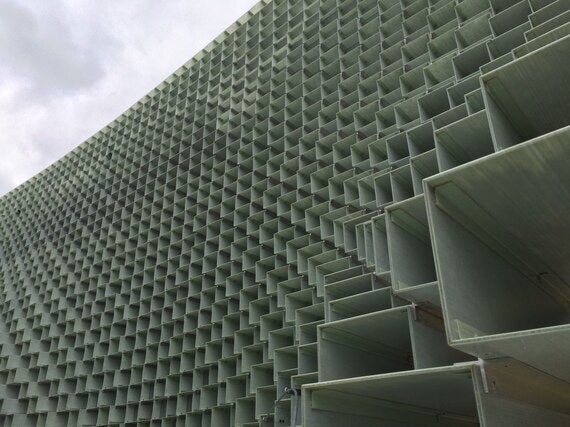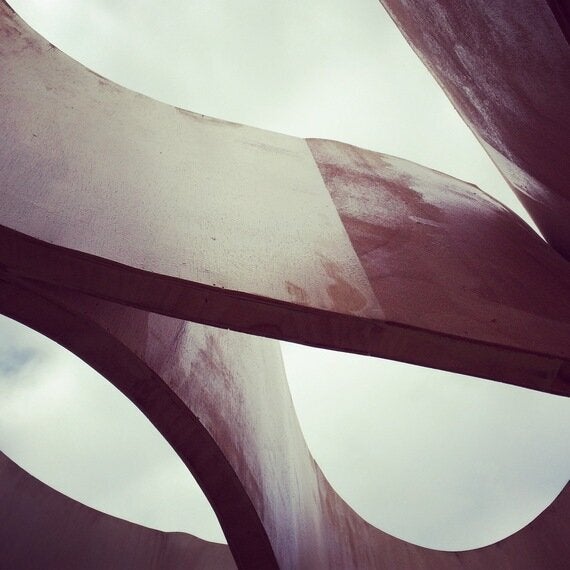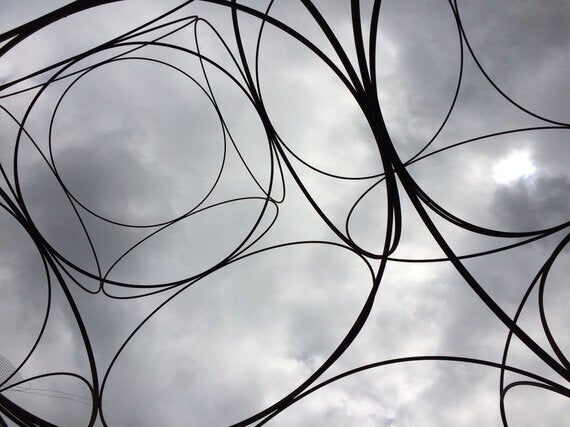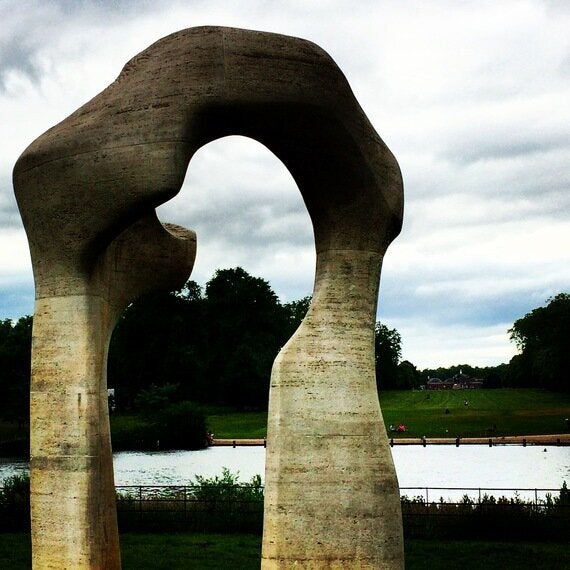
Photo by Christine de León
I've been experiencing politics fatigue amplified by social media and traditional media coverage. I can't scroll a feed or switch on a telly without being inundated with the Leave vs. Remain chat. Frankly, the events of last week which not only saw the assassination of British MP Jo Cox by a neo-fascist and the unveiling of UKIP's racist propaganda set out to demonise refugees has left me numb and shell shocked.
So I decided to take an afternoon away from the screens and hashtags. I spent a few hours in Hyde Park to check out at the Serpentine Gallery's current exhibition at the Pavilion.Summer Houses 2016 where international architects build their Summer Houses side-by-side, inviting the public to explore each of the temporary structures.

Photo by Christine de León

Photo by Christine de León
The exhibit blurs the line between architecture and art installation, and for me there were two stand out summer houses. The curved plywood tear drops of by Barkow Leibinger, a Berlin/New York based architectural practice and the modular steel hula hoops by Yona Friedman, a modernist Hungarian-born French architect and urban planner. Both structures enticed me to come in, walk around and look up above to directly experience positive and negative space, function and form. When I was there a small group of nursery school children were having some fun, running in and out of all four of the summer houses.

Photo by Christine de León
The modern British sculptor Henry Moore's Arch is not too far away. Right in the middle of Kensington Gardens, it draws the eye across the green to a distant view of Kensington Palace. The sculpture is as monolithic as the inhabitants of the palace behind it.
Drawing comparisons between contemporary conceptual work and last century's art canon. I am unable to escape the EU referendum debate even in the middle of Hyde Park. For me, Arch symbolises a bygone era: when Britain still had the vestiges of commonwealth power in its hands, reaping the benefits of a vast post-colonial empire. The Summer Houses draw from what is happening right now, in this moment: a hyper-globalised 21st century market place where borders matter less and less with the free movement of labour and capital.
To divorce Europe is to go back in time, in the hopes of rescuing some kind of distinct culture that is unmistakably British like a Henry Moore sculpture in a Royal Park. I'm not saying this is wrong, I'm a huge fan of Moore (more of Hepworth but that's another blog), but his work is only one view.
To remain in Europe is to go further into the heart of an economic project that houses a myriad of views that influence our culture. The Creative Industries Federation recently debated EU membership and the outcome was on overwhelming support for staying in the union.
The key reasons are both economic and cultural. The EU is the largest export market for the UK Creative Industries, making up 56% of all our overseas trade. From a cultural exchange standpoint, the UK's creative industries are undeniably enriched by the diversity and strengthened by the movement of talent across the EU.
Like Summer Houses, the European Union enables cross-cultural exchange and dialogue from a point of difference that can be explored in a borderless space. This, to me is a positive vision of the future. The EU isn't without its problems, but you can't change it if you're not in it.
